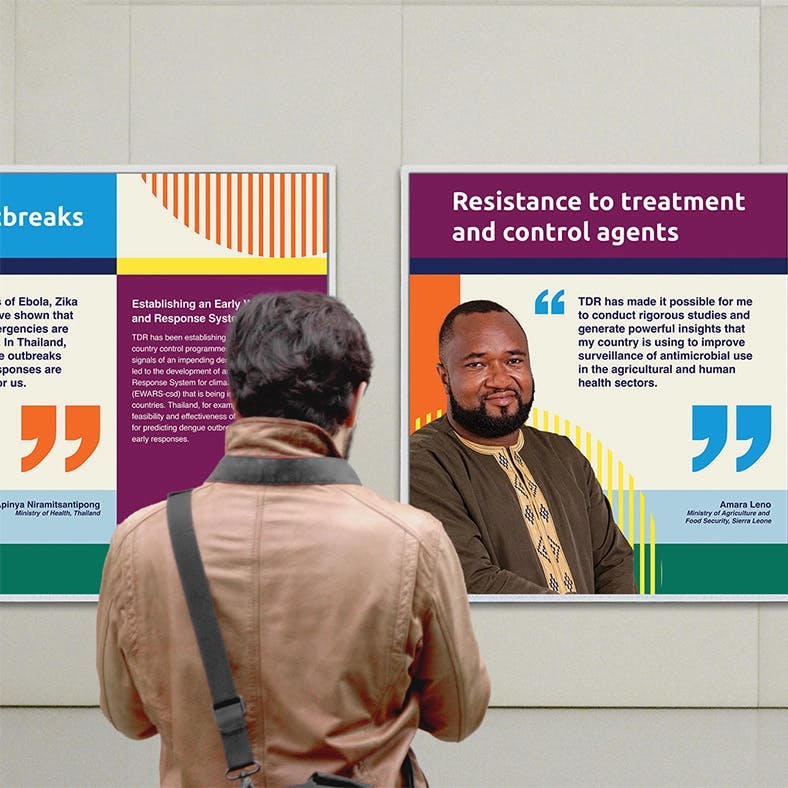Factsheets and scorecards on the impact of vaccines on antimicrobial resistance and antibiotic use
In 2019, an estimated 7.7 million deaths were linked to 33 bacterial infections, and nearly 5 million to antimicrobial resistance (AMR). Vaccines have been shown to play a critical role in reducing the AMR burden worldwide. In 2024, WHO released a data-rich report on this topic entitled Estimating the impact of vaccines in reducing antimicrobial resistance and antibiotic use.
The brief
In addition to designing and visualising the full technical report and an interactive dashboard Lushomo was tasked with creating infographic summaries of the data from the report. Visual scorecards were developed for a wide range of vaccines, as well as six factsheets, tailored to specific audience groups, with relevant insights and recommendations from the research.
Our approach
First we developed a colour palette of gradients to differentiate the large number of individual vaccines being profiled. Because some pathogens have more than one vaccine in development, we assigned a unique colour to each pathogen, and another to each vaccine against it. The resulting 44 unique colour gradients visually differentiate each infographic scorecard and vaccine.
Visual language
The gradient-based colour palette is paired with strong typography and expansive negative space. The resulting clean, airy design allows the data to take centre stage – bright charts and line icons differentiate key information on indicators, demographics, impacts, and target audiences.
The deliverables
In addition to the 168-page report, we created 44 vaccine scorecards, and six summary factsheets tailored specifically to funders, policymakers, programme implementors, community representatives, healthcare workers and researchers. The brief also included a set of social media tiles and the online dashboard.
The highlights
The scorecards offer a comprehensive assessment of 44 vaccines targeting 24 pathogens, including both licensed vaccines and those in development. What sets the data in this report apart is its detailed modelling of the burden averted by vaccines and the feasibility of development for each pathogen.




















